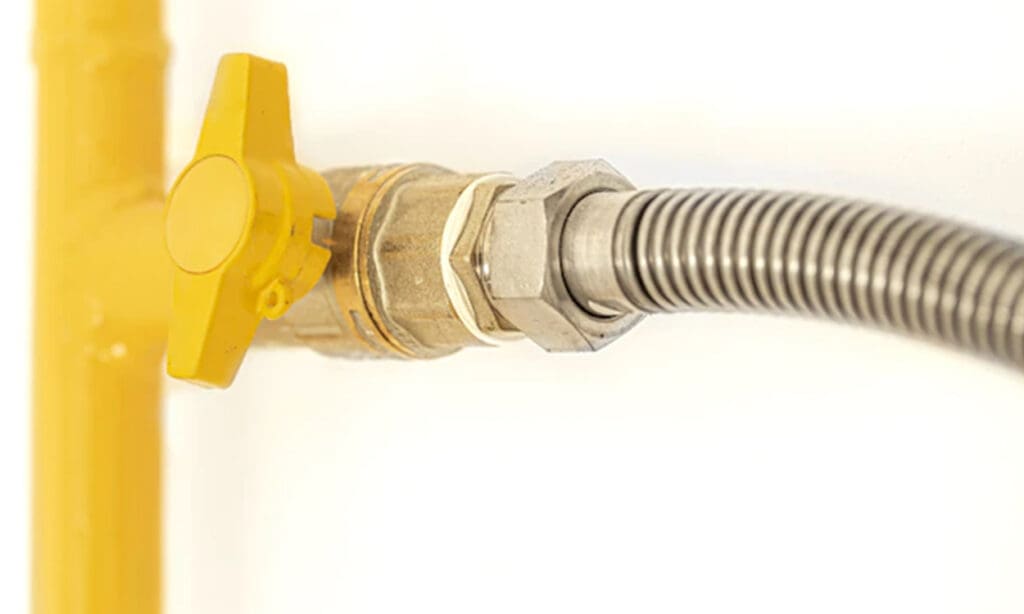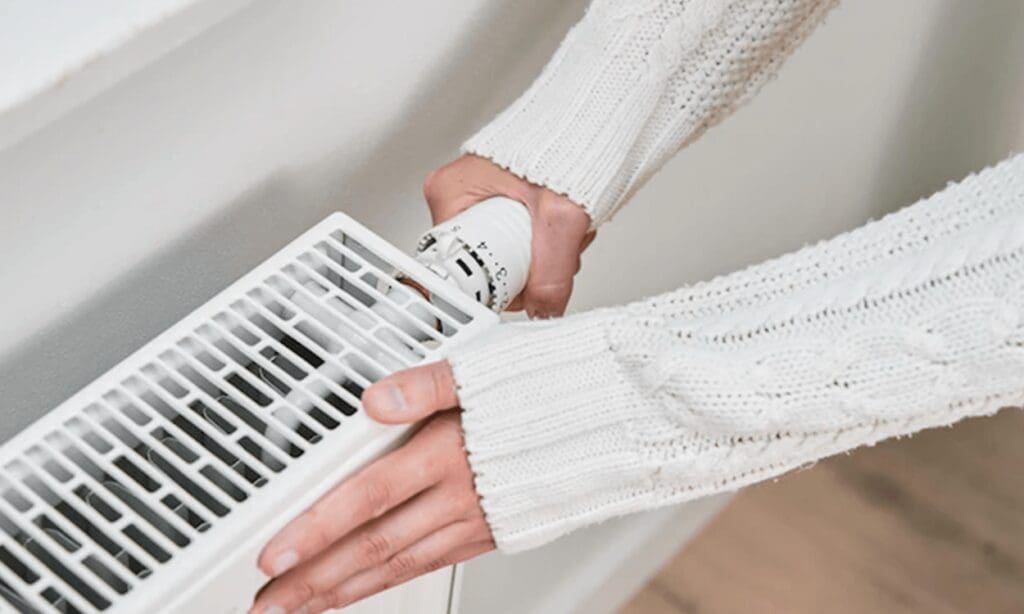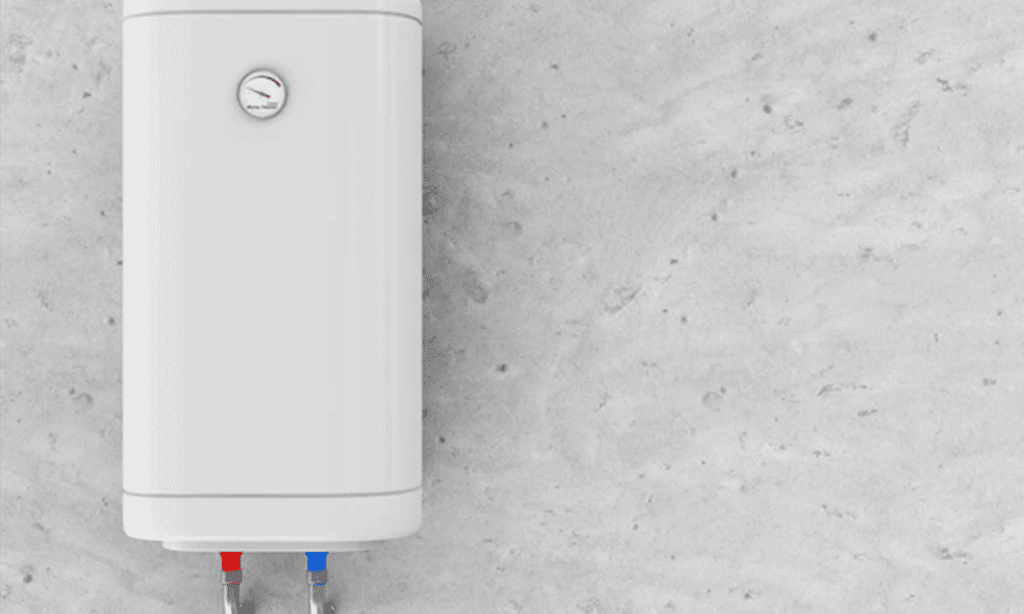Meet Luke Fisher, GreenSmart Director

Say ‘Hi’ to Luke I’m Luke one of the two directors here at GreenSmart service. Since starting GreenSmart services back in October 2020, my main focus and goal has been to grow the business and make it one of the top plumbing, heating and gas companies in and around Bath, with customer satisfaction at the heart of it all. At GreenSmart we want to create a warm and welcoming environment for all of our employes, the team we have and continue to build is key to offering a great all-round experience for the customer. I was born in Bath but have lived in Chippenham for most of my life, it’s a great area with lots of natural beauty around such as Castle Combe and Lacock – where I enjoy lots of walks with my dog, Norma. My main sport has always been football, to which I played at a relatively high standard up until about 22. One of my other hobbies is being better at skiing than Damian (the other director)- I really love that one! Between GreenSmart and a home renovation that my wife and I have undertaken, a lot of my free time is consumed. However, in my free time I enjoy spending weekends with both sides of the family relaxing, socialising and exploring local walks. What were you doing before you joined GreenSmart Services? I have been part of the construction industry since I was 16 years old, when I started as an apprentice. I worked with another plumbing and heating company for 12 years, taking a 2-year break to go travelling and even doing plumbing work in Australia. Before my apprenticeship I worked for my dad cleaning lorries and I worked in a kitchen in a local village. Your career with GreenSmart to date Since being a director of GreenSmart my role has grown and adapted – it has often been a steep but rewarding learning curve. Over the past 2 years it has taken on many changes from working with customers and building relationship’s, to where I am now, taking on more of a training role for apprentices coming through GreenSmart. This is a role I find very rewarding as I can support young people to grasp and develop their knowledge of the plumbing industry. It is fulfilling to see that your teaching enables others to apply what they have learnt to real scenarios and to see them grow into skilled individuals. What’s your favourite thing about working for GreenSmart Services? It has to be the GreenSmart team! Having people around that you can work well with and enjoy each other’s company whilst providing high quality work. Another massive favourite of mine is standing back, looking at completed jobs for clients and seeing how happy they are, having a positive impact on people homes leaves us all with a great sense of accomplishment. Let’s get to know more about you with some quickfire questions: If you could go anywhere in the world, where would it be? Japan What are three things you can’t live without? Norma (my dog), Pizza and my awesome family. Is there a hobby/activity you’d like to get better at? As I am half Italian, I would love to learn the language one day.
How to find your home’s water stop tap

As a homeowner, it is important that you know where your water stop tap is located in case of an emergency, such as a burst pipe. But what is a stop tap, how do you locate the one belonging to your property, and what do you do with it once you’ve found it? What is a stop tap? A water stop tap, otherwise known as a stopcock or a stop valve, is a small tap that is located on a water pipe. They are used to turn the water supply on or off for your property. There are two different types of water stop taps – internal and external. How do I find my stop tap? Where your water stop tap is located depends on the type of stop tap you’re referring to – internal or external. Internal stop tap Internal stop taps turn off the water supply to a single property, and it is the responsibility of the occupant to ensure that it is working correctly. In most properties, the stop tap is inside the building, close to where the water pipe is located. The exact place can vary, but you will often find your internal stop cap in one of the following places: External stop tap An external stop tap controls the main water supply to your property, and is sometimes shared with your neighbours. It is the responsibility of the water company to ensure it is working properly. You should only use an external stop tap if you cannot find your internal one, or if it isn’t working. An external stop tap is usually located close to your property, such as: If you share with your neighbours, please make sure to let them know that you are turning the water off. How do I use my stop tap? This depends on the type of stop tap you have. The most common types are either a conventional twist style brass tap or a more modern lever valve which typically has a handle that turns 90 degrees. Once you have located yours, they are very easy to use to turn your water supply off and back on again. You should be able to operate it yourself. If you have the more conventional twist style brass tap then to stop the water supply to your property, turn the handle clockwise. It may take a few turns to stop the water, and you shouldn’t need excessive force to turn it off. If you are using an external stop tap, you may need a stop tap key to be able to turn your main water supply off or on. It will take a few minutes for the water to stop running in your taps, as there will be water left over in the pipes from before you turned the water off. To turn your water back on again, turn the tap anticlockwise until you cannot turn it any further. It may take some time for the water to start running from your taps again, as it will need to run through the pipes once more. How GreenSmart can help If your inside and outside stop taps aren’t working, or you are unable to locate them and you need to turn your water supply off or on, contact us and we will be able to send one of our experienced engineers round to help.
How to bleed your radiators

If you’ve noticed that your radiators aren’t heating up properly or are cold at the top and warm at the bottom, they may need bleeding. Luckily, this is a relatively easy job for you to do without the help of a professional, so we’re here to give you a step-by-step guide on how to do it. When would bleeding a radiator be necessary? Radiators need bleeding when there is air trapped in them. This trapped air will stop the warm water circulating within them, which can make them warm at the bottom but cold at the top. Trapped air means that the central heating system isn’t working efficiently, and it can take a longer time to warm the room, which can cost money – and in a cost of living crisis, this is something we want to reduce as much as possible! Another sign of trapped air is noisy radiators that are making loud banging, clanding or gurgling noises. These sounds are annoying, but are often not a cause of concern. We recommend that you bleed your radiators once a year, even if they are all working properly, as this will ensure that your central heating system is working efficiently. How to bleed your radiators? You’ll only need two or three pieces of equipment to bleed your radiators, both of which are easy to find at a DIY store if you don’t already own them: The first step in bleeding your radiators is to turn your heating off and allow your radiators to cool down completely. This will stop you from burning or scalding yourself on hot water. Once your radiators have cooled down, hold your jug or cloth under the bleed valve and insert the bleed key. The key will fit into the square groove in the centre of the valve at the top of your radiator. Slowly turn the key anti-clockwise until air starts escaping. Don’t worry – you’ll know when the air is escaping because you’ll hear a hissing noise. Your jug or cloth will be in position to catch any leaking or spraying water. Once the hissing stops and there’s only water coming out, quickly retighten the valve by turning the key clockwise. Turn your central heating system back on and allow your radiators time to heat up again. If heat is evenly spread through the radiator and it seems to be heating up properly, you’ve fixed the problem. Bleeding your radiators can cause your pressure to drop. Check the pressure by looking at the gauge on your boiler.If the pressure is too low, you’ll need to top it up by using the filling loop. If you are unsure whether the pressure on your boiler has dropped, or if you need assistance when topping it up, speak to one of our friendly team members and arrange a call out. Still not working properly? If you find that your radiators still have cold spots after bleeding them, you may have another issue. Please contact us today to get the assistance of one of our registered Gas Safe engineers.
A guide to central heating system power flushing: what it is and how it works

There’s no doubt that your central heating system gets mucky. It holds litres of water that circulates around your home via pipes and radiators, so naturally, it will gather some grime, sludge and debris along the way. The solution is to give your system a thorough cleansing with a power flush – a dedicated cleaning method that helps to keep your home’s central water system functioning as intended, whilst also preventing potential problems from occurring in future. What is a power flush? A power flush essentially does what it says on the tin. It’s a powerful cleanse that is used on your home’s central water system to flush out and remove byproducts such as rust from pipework and radiators and other general debris that has naturally built up within your system over time. If left to idly gather, sludge and the other listed byproducts can cause blockages, corrosion and general wear and tear on your central heating system, ultimately reducing its efficiency, lowering its lifespan and potentially leaving you with big bills to pay out of pocket for. What happens during a power flush? A power flush is conducted by an engineer that connects a specialised pumping machine directly to your heating system that circulates water with chemicals throughout your heating system at high pressure. The chemicals that are pumped through your heating system are specially designed to remove the sludge and debris to help clear the system. Once the flush is complete a suitable corrosion inhibitor is added to the system followed by a system water quality test to ensure the water within your heating system is where it needs to be. How long does a power flush take? The time taken to entirely powerflush a central heating system will depend heavily on the type/size of the system and boiler your home has. Not only this, the condition of your home’s heating system will also affect the length of time that will be needed to conduct a thorough clean. Roughly, a power flush will take 6-8 hours to complete but can take a day or two heavily depending on the size and extremity of your water system’s condition. How to tell if your system needs a power flush Your home’s central heating system will tell you when it’s in need of some TLC and communicates the signs it needs a power flush in different ways. Spotting the signs: Benefits of a power flush As stated previously, a powerflush can help to keep your boiler and central heating system running smoothly and efficiently. As a result of directly flushing the system, it helps to improve the overall system performance which means your heating doesn’t have to work as hard to push the water through. This in itself means less energy is consumed, and therefore, lower energy bills. Not to mention all the other benefits provided by giving your central heating system a power flush: How often should you flush your central heating system? If you get your boiler serviced and checked annually (which is highly recommended), then your heating engineer will do an inspection of your overall heating system as part of their routine checks anyway. It will be at this point that they may advise you to pursue a central heating system power flush if they notice any blockages or problems. If you’re getting a new boiler installed into your home, then a power flush should be executed as part of the installation process. Who should perform the power flush? A power flush should not be conducted by yourself or even by a very handy DIY-obsessed friend/family member. A fully qualified heating engineer should always be the one to work on a power flush service as they hold the required qualifications and expertise needed to perform a power flush in accordance with regulations and safety standards. Any mistakes made to the heating system could end up leaving it in a worse state than it was before, so ensure that a qualified professional is the one to do the job. Our team of Gas-Safe registered heating engineers hold the qualifications, accreditations and experience to handle both simple and complex central heating systems. How much will it cost? The cost of a power flush will depend on the size of your home’s system and the severity of the flush itself. Pricing for a power flush can start at around £500, but can increase depending on the size and condition of your system. Consult with your engineer to understand how much a power flush for your home could cost and to see if/what financing options they may have available. Want to arrange a call-out? Our friendly and qualified Gas-Safe registered team of engineers are on hand to review your home’s central heating system and provide our expertise to conduct a power flush should your home need it. Get in touch with one of the team today.
What is Green Plumbing?

With the rising temperatures, melting ice caps and air pollution, many people are looking to more environmentally friendly solutions. Eating less meat and recycling frequently are important ways of reducing your individual impact on global warming, but what if we told you that there’s a way for your plumbing to help save the planet, and save you money, without you really needing to think about it on a daily basis? With World Earth Day upon us, at GreenSmart we wanted to spread the word about green plumbing so that we can help you be more eco-friendly. What is green plumbing? Green plumbing is the investment in eco-friendly modifications and products to minimise water consumption, conserve energy, decrease chemical effects and lower utility bills. It can include the installation of water saving taps, solar-powered hot water, water storage tanks, septic tanks, rainwater harvesting devices and rainwater powered toilets and washing machines. Traditional kitchen and bathroom plumbing is notoriously inefficient. A standard water heater uses a large amount of energy by constantly keeping hot water ready, even during times when no one in the building would use it. Standard toilets often use several gallons of water for a single flush, but green plumbing helps to resolve this waste to help make homes and businesses more efficient and environmentally friendly. What are the advantages of green plumbing? Obviously, the biggest advantages of green plumbing are the decreased environmental impact of eco plumbing systems, and the reduced waste that they produce. As well as this, they also save money, extend the usage of your appliances due to the reduced water flow, and improve the health and hygiene of those living in the property due to the better air quality and uncontaminated water supply. Does green plumbing cost much? Taking on modifications in your property, depending on how many you make and which you choose, can be costly in the short-term. However, green plumbing is guaranteed to save money on bills because it diminishes waste. Water, for example, is easily wasted – especially in the kitchen and bathroom. A leaky tap, for example, could waste up to 3000 gallons of water a year, and flushing the toilet uses between 3 and 6 litres of water per flush. Installing low-flow showers and toilets can minimise water consumption and reduce your water bills, and installing a tankless water heater can save you money on energy bills because they heat water only when you need it, rather than constantly – like traditional plumbing measures. As well as this, the reduction in water flow ensures less wear and tear and therefore fewer repairs or replacements of pipes and appliances, contributing to future savings too. Contact GreenSmart today to discuss our green plumbing services and find out how we could help you be more environmentally and economically friendly.
Meet Damian Bush, GreenSmart Director

Say Hi to Damian I’m Damian, one of the two current Directors here at GreenSmart Services. My main passion and ambition is the development of the business. I want GreenSmart Services to be a thriving and successful business and to become the ‘go-to’ plumbing, heating and gas company in Bath and surrounding areas. A huge priority for me/GreenSmart is to provide a great working environment for our employees. Workplace wellbeing and company culture are very important to us and we’re on a real journey to develop that. Outside of work, I enjoy getting lost in a good book or spending time with my friends and family. I was born and raised in Bath, Somerset. Bath is such a fulfilling and enjoyable place to live, work and play, there’s so much to offer and it neighbours larger cities such as Bristol so there are plenty of options for things to do and outings. I’m quite an active person and enjoy physical activities such as running and cycling, plus I love the occasional skiing trip. GreenSmart consumes a lot of my free time. It’s just a part of the job, especially being a director of the business. But when I do manage to get some breathing space on a weekend, I enjoy exploring what cuisine options I can find. After all, a weekend wouldn’t be a weekend without finding a great new place to grab a bite to eat. What were you doing before you joined GreenSmart Services? The construction industry has been a part of my life since I was a teenager. I’ve been in the construction environment since I was around the age of 14 working with my Dad, so I’ve essentially matured and grown with the trade. In the past, I’ve worked as a site labourer working on different hands-on projects. Before GreenSmart, I also worked for another heating and plumbing company so have had my fair share of experience within the industry. Although, it’s not been all 100% construction and trade! I did have a short stint as a sales assistant at Marks and Spencer’s and Woolworths! Your career with GreenSmart to date As the Managing Director, my role is ever-changing along with the business growth so currently, I’m much less involved with the tools of the trade than I was previously. However, I am very flexible and good at adapting to my environment so either one works for me, whether on the tools, out and about or in the office. I love that whatever my role is, on any given day I’m able to deal with and communicate with people regardless. I’m a big people person and love chatting with others, getting to know them and building long-lasting relationships both inside and outside of work. The long-term plan for the business is to build and evolve GreenSmart into the company we know it can be. We have a great foundation and we know exactly who we want to be. We want the business to be friendly and to offer genuine solutions to problems, not short-term fixes. I want the business to stand as a beacon for the industry, to educate youth and help them develop their skills, to help reform some of the lesser preconceptions that occasionally still do exist about the construction industry, to encourage all members of the team to think outside of the box whilst doing it all with a solid structure of honesty and integrity. What’s your favourite thing about working for GreenSmart Services? It has to be meeting new people and developing and building those long-standing relationships with them, whether that’s our clients, partners, my amazing teammates, contractors, subcontractors or others. I also love the idea of legacy, building something and being part of something that I can be really proud of that will be around long after me. Let’s get to know more about you with some quickfire questions: If you could go anywhere in the world, where would it be? Wherever the best skiing is! What are three things you can’t live without? Phone, a purpose (deep answer), my cats (Ray and Bob). Is there a hobby/activity you’d like to get better at? I’d love to learn to play the piano.